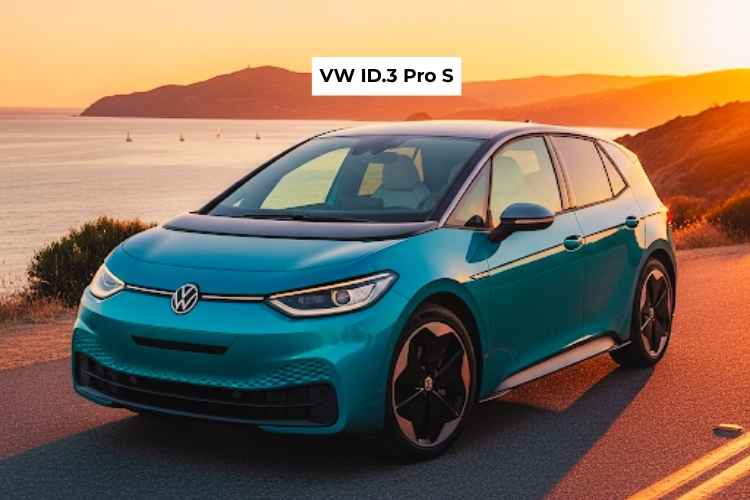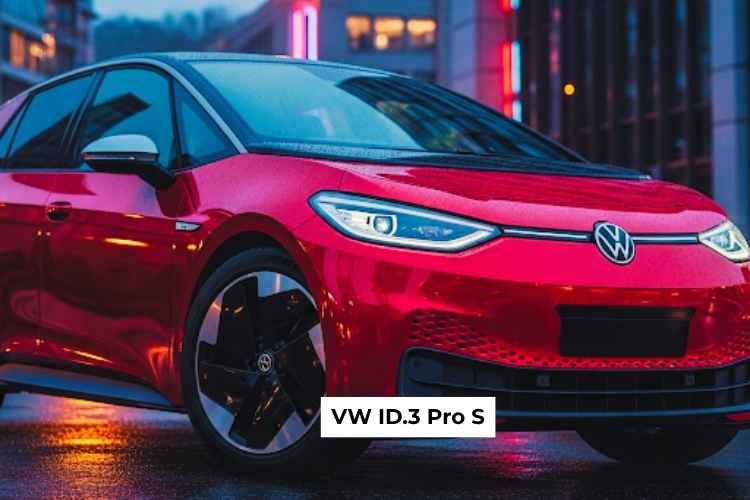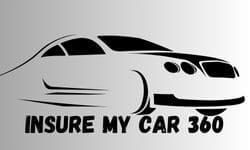VW ID.3 Pro S: If you’ve been watching the electric-car space, one nagging question probably keeps popping up: how will EV batteries hold up after real-world, long-term use? ADAC — Germany’s large, independent auto club — just put Volkswagen’s ID.3 Pro S through a brutal endurance run, and the result is simple: the battery got a big thumbs up. Here’s what happened, why it matters, and what it means if you’re buying new or used.

Table of Contents
VW ID.3 Pro S: Who ran the test and how tough was it?

ADAC’s Test & Technology Centre in Landsberg am Lech designed the endurance trial to mimic aggressive, real-world scenarios — intentionally tougher than “follow the handbook” driving:
- Test distance: ~160,000 km over ~4 years.
- Battery: a 77 kWh net high-voltage pack (ID.3 Pro S).
- Charging habits: >40% of charging sessions were on DC fast chargers; the car was sometimes left at 100% charge for days (a practice normally discouraged).
- Software updates were applied during the test — ADAC notes OTA updates matter for charging behavior and efficiency.
Bottom line: ADAC didn’t baby the car. They pushed it in ways that most owners might (but shouldn’t usually) do, and still the battery showed only modest wear.
VW ID.3 Pro S: what “91%” actually means
“91% State of Health (SoH)” means the battery can store roughly 91% of the energy it did when new. Practically, that translates to only a small drop in real-world range. ADAC’s detailed logs show the ID.3’s real driving range stayed very close to its original everyday figure — a loss measured in single-digit miles rather than dozens. For example, real-world range figures cited in the test hovered around ~425–438 km (≈264–272 miles) initially and remained roughly similar after the run.
Why that matters: a battery that drops to 70% SoH (VW’s warranty trigger) would noticeably reduce long trips and resale value. At 91%, the ID.3 remains very usable for years — and more attractive as a used EV.
VW ID.3 Pro S: tech + software + testing nuance
Several factors likely helped the ID.3’s battery age gracefully:
- Battery chemistry & thermal management: Volkswagen’s cell design and pack cooling/heating systems are tuned to reduce stress during charge/discharge cycles. ADAC’s test implies the pack’s thermal control did its job even with many fast charges.
- Software updates matter: ADAC specifically recommended keeping cars up to date. During the test, software updates improved charging speeds, battery management and efficiency — lowering consumption from roughly 20.0 to 18.3 kWh/100 km over the course of testing. That’s a measurable efficiency gain without changing hardware.
- Design margin & conservative usable capacity: Automakers often leave a buffer in battery packs (not using the absolute top and bottom of cell chemistry), which protects longevity. The net 77 kWh figure already reflects the usable portion; the remaining margin helps longevity.
Conclusion
ADAC’s endurance test is a clear, independent thumbs up for the ID.3 Pro S battery. Retaining ~91% usable capacity after nearly 100,000 miles under tough charging and storage conditions is excellent and helps erase a lot of the range-anxiety talk around used EV batteries. That doesn’t mean the car is flawless (winter performance and some small reliability items remain), but for battery longevity — the heart of EV worry — the ID.3 just earned serious credibility
Bhakti Rawat is a Founder & Writer of InsureMyCar360.com. This site Provides You with Information Related To the Best Auto Insurance Updates & comparisons. 🔗
